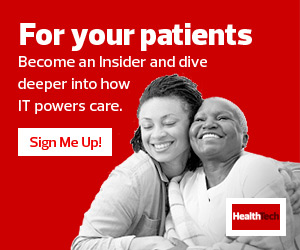What Is Real-World Evidence?
Real-world data is a collection of information about a person’s journey through healthcare collected at various points of time and amalgamated, according to Guardant Health Chief Medical Officer Dr. Craig Eagle. The data is collected from sources such as electronic health records, disease registries, claims and billing activity, patient-generated data, and even data gathered from personal mobile devices and wearables. This data is de-identified when building real-world databases.
“This type of data collection has the potential to enhance understanding of unmet patient needs, identify their commonalities and differences with other patients, and how to fulfill them — how to treat the patient based on their own needs versus treating symptoms of an ailment or disease,” says Chris McCurdy, senior manager of global life sciences solutions architecture at Amazon Web Services.
Real-world evidence involves analyzing data sets and interpreting results to determine what’s happening in the real world. Analysis of real-world data produces real-world evidence.
“We’re sampling real-world data to try to understand the real world,” says Eagle.
One example of using RWD would be to build a better understanding of how cancer diagnoses impact patient outcomes, how patients respond to specific cancer treatments, why cancer is breaking through if a patient is not responding to a treatment, and what the appropriate next steps are in the patient’s care.
Eagle explains that Guardant researchers can identify a cancer DNA mutation in the blood, for example, that affects a protein called the epidermal growth factor receptor (EGFR) in some patients with advanced lung cancer. The EGFR mutation allows the lung cancer to grow quickly. A treatment has been developed to target that specific mutation.
However, this treatment can become less beneficial over time. Using real-world evidence on cancer outcomes and aligning it with Guardant’s cancer genomic liquid biopsy data, the organization can start to determine if there’s a specific mutation that causes resistance to the therapy. This can enable future work to discover a treatment to target that mutation.
READ MORE: Why should healthcare organizations hire a data quality manager?
What Role Does the Cloud Play in Real-World Data Platforms?
Data platforms are required to realize the power of real-world evidence and could range in complexity for a simple Excel spreadsheet to complex data analysis platforms.
“Formatting data to be on these platforms is a key step in the process of creating an effective data platform and eventually a real-world database,” says Eagle.
However, a simple list of formatted RWD is inefficient for analysis if it isn’t organized, linked and easily searchable. Eagle says that a classic example of a real-world data platform is the one created by the Surveillance, Epidemiology, and End Results Program (SEER), which provides information on cancer statistics in the U.S.
In addition to public databases, researchers or healthcare organizations can create their own in-house databases or aggregate data from several public databases and apply an artificial intelligence (AI) algorithm to enhance the analysis of real-world data with fewer mistakes compared with a human.
Many organizations rely on the cloud to bring real-world data together. McCurdy explains that real-world data platforms leverage cloud computing technologies such as cloud storage, flexible computing, geographic reach and AI with machine learning (ML) to bring varied real-world data sources together, which is especially important when it comes to clinical trials.
“For example, to help customers generate maximum evidence from trials, Precision Digital Health developed a cloud-based platform capable of integrating and harmonizing disparate data assets in the research and development and life sciences industry,” he says. “PDH’s SUMMA platform enables compliant evidence generation powered by cloud, with a configurable nature that keeps innovation at pace with the rapidly evolving healthcare and life sciences landscape. This approach enables data management for all aspects of the trials process, with self-service analytics and visualization tools to support a wide range of research needs.”
Using the cloud to host data can enable healthcare organizations to access important patient information, and healthcare providers to optimize clinical decision-making and focus on preventative strategies and personalized treatment. Eagle points out that a benefit of using the cloud is the ability for multiple people to access the data at once from different locations and different interfaces.












